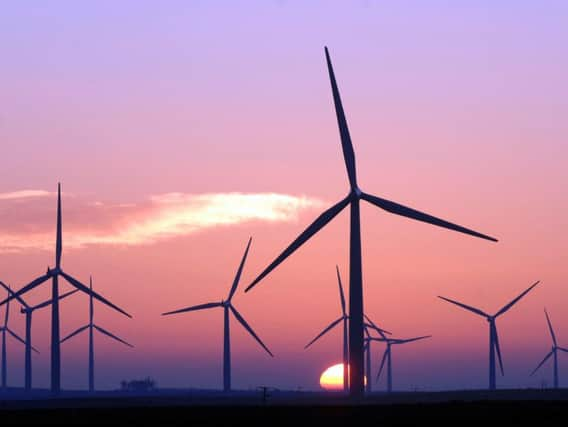Scotland is at a turning point for onshore wind - Kevin Cannon


Glasgow was selected in September to host the 26th Conference of Parties (COP) to the United Nations Framework Convention on Climate Change. Scotland has long been the UK’s strongest proof that renewable energy can transform a nation’s reliance on carbon-heavy electricity and oil and gas production in a relatively short space of time, providing the right framework and tools are in place to support it.
Even in the oil and gas heartland of Aberdeen, great strides are being made to decommission and invest in new technologies to reduce negative environmental impacts, and to ensure the country remains competitive on the international stage, but Scotland’s greatest success story is undoubtedly the widespread adoption of both offshore and onshore wind power.
Advertisement
Hide AdAdvertisement
Hide AdScotland generated almost twice the entire country’s domestic power requirements in the first half of this year from wind, powering homes from the Outer Hebrides right through to the south of England, something that has been achieved in just over a decade.
Total installed capacity of renewable electricity in Scotland has grown from 3,353 megawatts in 2008 to 11,036 MW last year, with onshore wind currently accounting for 71 per cent of total capacity.
An alarming drop
Public backing for onshore wind has reached an all-time high – 79 per cent according to new figures from the Department for Business, Energy & Industrial Strategy – and industry is slowly starting to take note. Last year, Scottish Power became the first major UK energy firm to drop fossil fuels completely in favour of wind power, after selling its remaining gas and hydro stations to Drax in a deal worth £702 million.
The withdrawal of UK government support for onshore wind introduced in 2015 has led to an alarming 94 per cent drop in onshore wind farm planning applications, with developers rightly hesitant to pass increased costs through the supply chain, ending with consumers. The number of jobs in renewable energy dropping by a third in the last year.
Thankfully, there are a number of schemes in place to ensure Scotland doesn’t fall behind in the production of renewable energy, including the Scottish Government launching a £3 billion Green Investment Portfolio to bring to market low-carbon projects over the next three years and the UK government’s Contracts for Difference (CfD) scheme, which protects consumers from volatile wholesale prices, thus incentivising developers. The recent CfD Allocation Round 3 results saw contracts awarded to six Scottish wind farms, four of which are onshore.
Untapped potential remains
The first subsidy-free onshore wind farm also broke ground earlier this month in Dumfries and Galloway, which will ensure zero-carbon electricity at a reduced cost for consumers, further signalling that developers can overcome the hurdle of funding subsidy-free schemes, in this case, offsetting costs by a community share offer. The reality of subsidy-free wind marks a significant step toward realising net zero carbon emissions targets.
That said, to encourage development at the scale that is required, there must be improved access to CfDs for onshore wind farms which remain largely excluded from auction frameworks as an “established technology”. A more expansive auction system supporting the wider deployment of onshore wind, together with measures to support the replacement of older turbines on existing sites, is key to reaching our decarbonisation targets. Onshore wind farms have proved their worth in the last decade and could become the single largest contribution to meeting the UK’s net zero climate change targets, if the correct frameworks are in place to support development.
As the UK’s biggest wind farm, Whitelee Wind Farm, celebrates its tenth anniversary this year, it is a time to not only reflect on how far renewable energy production, in particular onshore wind technology, has come, but also recognise the untapped potential that remains.
Advertisement
Hide AdAdvertisement
Hide AdIn its selection of Glasgow as the host city for COP26, the UK has demonstrated a belief in Scotland’s ability to lead the way in meeting the country’s carbon targets and as host country, is also an opportunity to demonstrate to the international community that inward investment should be prioritised for renewable energy schemes.